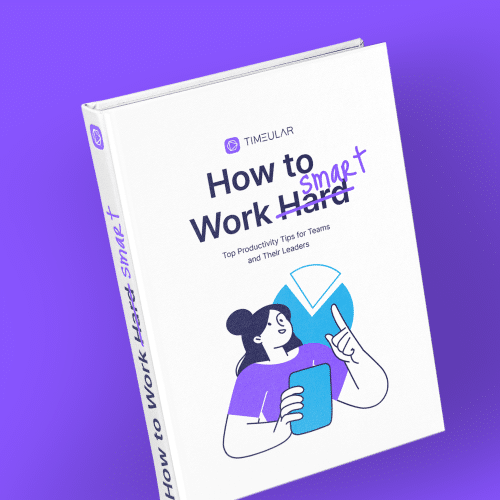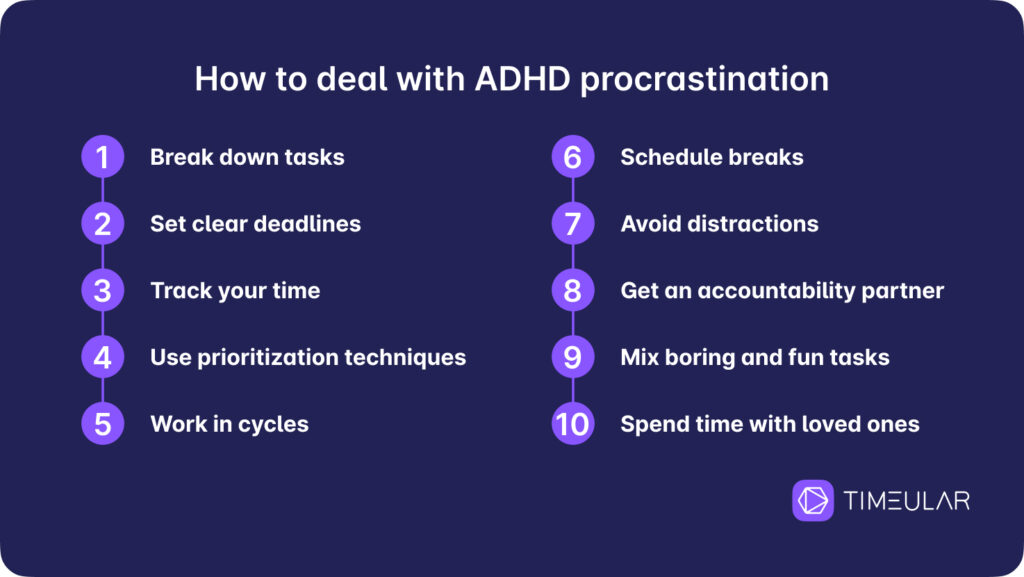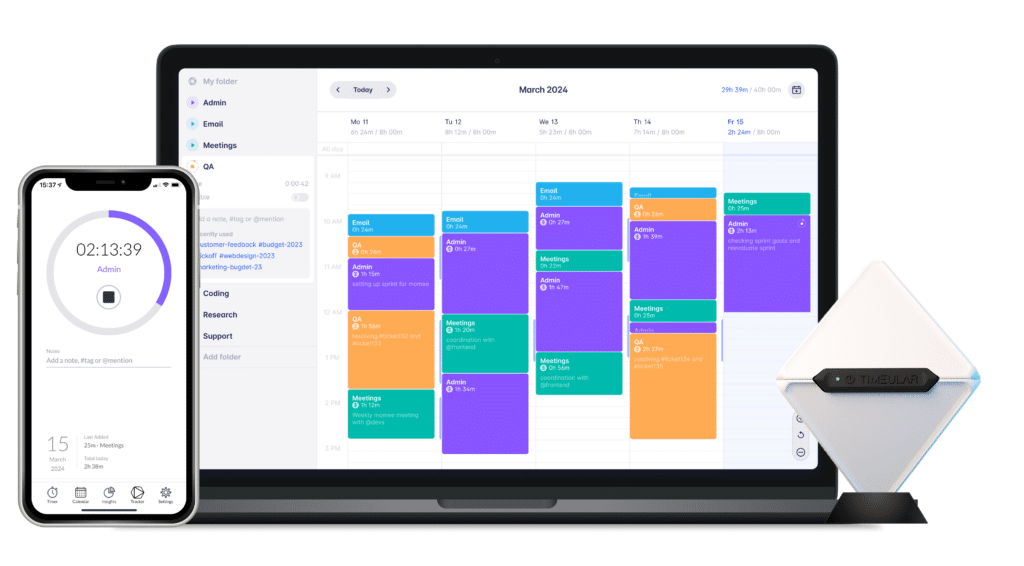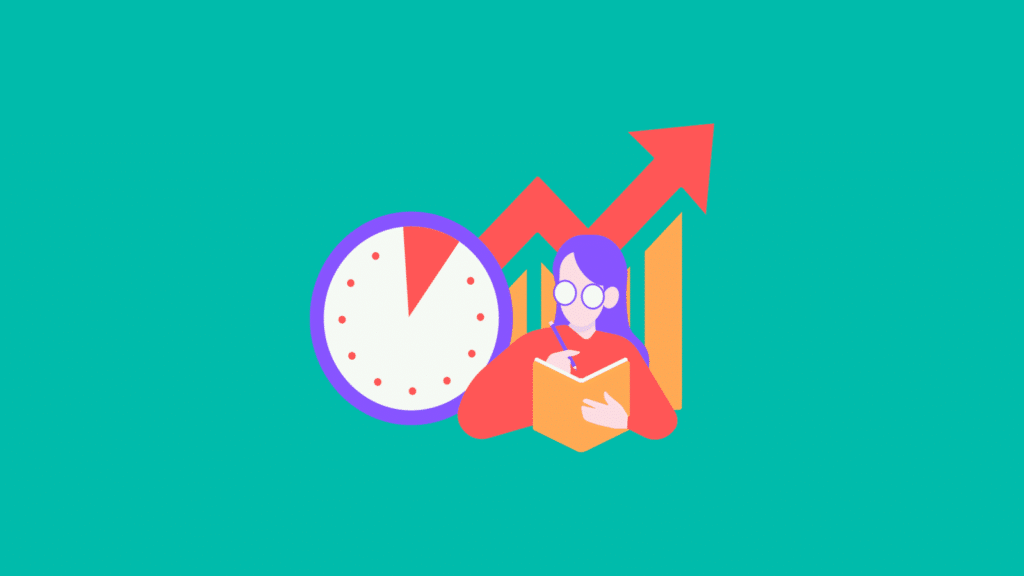How to Stop ADHD Procrastination: 10 Practical Tips
In the quest to overcome ADHD procrastination, individuals often encounter challenges that can hinder productivity and well-being. However, with the right strategies and a determined mindset, it is possible to take control and make meaningful progress.
This article presents 10 practical tips specifically tailored to help those with ADHD combat procrastination effectively. By implementing these actionable techniques, readers can foster focus, boost productivity, and navigate through their daily tasks with greater efficiency, ultimately leading to a more fulfilling and accomplished life.
Let’s take a deep dive into 10 tips on how to overcome ADHD procrastination.

Get your free copy and learn top productivity tips for teams and their leaders
What is ADHD?
ADHD, or Attention Deficit Hyperactivity Disorder, is a neurodevelopmental disorder with a prevalence of 2.8 percent in adults.
Hyperactivity, impulsivity, and inattentiveness are among the most common ADHD symptoms.
Still, another behavioral issue is often part of therapies for adults with ADHD. Yes, you guessed it right: Procrastination.
Our goal today is to educate you about the relationship between these two issues. At the same time, we’ll provide you with techniques and tips to better manage your time and motivation. Our goal is to answer one of the most critical questions: how to stop ADHD Procrastination for good.
What is the relation between ADHD and chronic procrastination?
To overcome ADHD Procrastination, understanding how ADHD and Procrastination relate is necessary. The first is a neurodevelopmental disorder, usually diagnosed during childhood.
Procrastination doesn’t constitute a mental health diagnosis. We all procrastinate occasionally when we postpone the tasks we need to do, even though we know it’ll have negative consequences. There are several ways to overcome procrastination.
So, what’s the link? A 2014 study showed that there’s a correlation between inattention and procrastination. Because they can’t focus on tasks they don’t engage deeply with for a long time, people with ADHD tend to put off or avoid some duties.
Procrastination is not a symptom but a consequence of ADHD.

How to deal with ADHD procrastination
If you struggle with ADHD, it may be hard to complete tasks, even the most important ones. We’ve gathered ten tips to help you overcome ADHD procrastination for good.
1. Break down tasks with SMART goals
The first step is setting SMART goals. SMART is an acronym for Specific, Measurable, Attainable, Realistic, and Time-Oriented, which are the characteristics your goals should have.
A SMART goal is: By [Deadline] we’ll achieve [Measurable outcome] by doing [list of tasks] involving [list of stakeholders].
Break down each one of your big tasks into smaller ones, and make sure you set specific and realistic deadlines. It’s also essential to define what is a failure or an achievement, making them measurable.
If you lack abstract thinking and need to visualize everything, make sure that the small goals are paired with concrete examples and metaphors.
Read also: Why is it so important to set realistic goals? 6 essential reasons!
2. Set clear deadlines
Have you ever noticed that the more time you have to complete a task, the longer it takes?
This happens because there is no sense of urgency when we set deadlines that are too long or even none. Most people need direct incentives to complete their tasks by a specific time.
A deadline can motivate you to keep on top of your tasks and feel better about having managed to finish them.
Nevertheless, self-set deadlines are not practical for most the ADHDlers. Hence, there’s a need for external motivation. A good strategy could be to ask someone to arrange a deadline for you and get an accountability buddy.
3. Track your time
Time management is one of the main challenges for individuals with ADHD. Next thing you know, a whole day has passed, and you haven’t completed a task. How can you avoid this? By tracking your time, of course.
Using a time tracking app (e.g. Timeular) lets you know exactly how much time you spend on each task, and use this information to optimize your time management. It’s so easy!
Do you want help to deal with ADHD? Find out how Timeular can help you!
How Rachael manages her ADHD with Timeular

4. Utiliser des techniques de hiérarchisation
So many tasks, so little time to accomplish them…how to prioritize? What to do when several studies have the same priority? Our suggestion: go for prioritization techniques! Here are some we find interesting.
Méthode ABCDE
Developed by the motivational public speaker and author Brian Tracy, the ABCDE method differentiates tasks with the same priority using the first five letters of the alphabet. How to implement it:
- Look at your to-do list and assign each task a letter from A to E according to its urgency (A will be the highest priority and E the lowest).
- If you have given, for example, the letter B to two tasks, differentiate them with a number to define the order in which you’ll complete them. Thus, task B1 will come before task B2, and so on.
- Repeat the above process until all tasks are in order.
If this method isn’t the best for you, you may want to try the 4 Quadrants of Time Management Matrix, created by President Dwight Eisenhower. It’s one of the world’s most widely used prioritization techniques, with proven results.
Eat The Frog technique
The most challenging task on your list is your Frog. So, start your day by doing it, which means crossing the hardest task off your to-do list.
When you apply the Eat the frog technique you’ll lower the risk of procrastination on difficult and tedious tasks.
Don’t forget to block all distractions — email, chat notifications, phone calls, TV, social media — and only access all that again after finishing.
Curiosity: Did you know that Eat the Frog technique is a great alternative to the Pomodoro method?

5. Work in productivity cycles
Nowadays, it’s hard to focus on a single task, whether it’s because of outside distractions or the sense of urgency to move on to the next item on your to-do list. So, we suggest you use work cycles to manage your time better.
- Divide your day into small blocks of time in which you should be hyper-focused. A partnership should be 20 or 30 minutes.
- At the end of each block, you gain the right to a break of 5 minutes.
- After the break, start with the consecutive focus block.
An excellent example of this method is the Pomodoro technique. This technique, invented by Francesco Cirillo in the 1980s, teaches us to divide our time into cycles of 25 minutes of uninterrupted concentration – a Pomodoro.
At the end of each 25 minutes, you can give yourself a 5-minute break. After four Pomodoros, you can take a more extended vacation, up to half an hour.
TIP: Try one of the best Pomodoro apps to make your life easier.
6. Schedule breaks
Research shows that employees who take breaks are more productive and creative. The same studies have found that taking breaks makes workers make fewer mistakes because they have higher concentration levels.
Try to introduce some movement into your breaks; get up and stretch or go for a short walk. Don’t forget to keep hydrated and eat healthy snacks throughout the day — nobody works well on an empty stomach!

7. Build a strategy to avoid time-wasting distractions
We often blame devices, email notifications, or social media for our distraction — and we’re right; these things usually take away our focus.
According to the research of two Harvard psychologists, the main problem with our lack of concentration lies in the human mind. They found that the human mind is programmed for a state of continuous distraction, which can be called “stimulus-independent thinking.” If this is the status quo of a non-ADHD person, for an ADHDler, avoiding distractions is even more complicated.
There are some techniques you can use to avoid time wasters. But you have to keep in mind that it’s essential to have a strategy to manage distractions while trying to be productive. For example:
- Mise en place distractions. Find a dedicated spot for your phone, like a shelf or a bowl. Leave your device and pick it up when you’re on your breaks;
- Plan your distractions and your focus time with timeboxing;
- Mute all notifications.
8. Get an accountability partner
An accountability partner is someone with whom you share common goals and will make sure you keep committed to them.
These goals could be finishing a work project, reading a book to completion, studying for some time, or keeping away from distractions. Setting goals is a way to keep you motivated to be more productive.
This partner can be a co-worker, a college buddy, a sibling, a friend, etc.
9. Mix boring and entertaining tasks
To accomplish tedious tasks, try to pair them with other activities you like. For example, listen to an excellent podcast while cleaning or doing the dishes. Or start fidgeting while learning or during meetings.
10. Spend time with people you love
Procrastination doesn’t just affect productivity; it can impact relationships. Putting off being with family or friends can increase feelings of isolation and frustration.
Social contact and sharing your victories and challenges are significant for your mental well-being and may help your motivation. Don’t procrastinate on being with your loved ones.
FAQs about ADHD and procrastination
Can ADHD cause procrastination?
There’s no evidence yet of a causal relationship between ADHD and procrastination. Procrastination can be also a consequence of poor time management. Studies suggest that people with ADHD are more likely to experience procrastination than people without ADHD.
La procrastination est-elle un signe de TDAH ?
Although no scientific study has effectively demonstrated a cause-effect between ADHD and procrastination, people with ADHD usually struggle with time management, leading to procrastination. Thus, procrastination is generally interpreted as a symptom of ADHD.
Does procrastination mean ADHD?
No. Procrastination is something that almost everyone experiences at some point in their lives. Although many people with ADHD procrastinate, not everyone who procrastinates has ADHD.
What is the difference between ADHD and Procrastination?
While ADHD is a neurodevelopmental disorder that requires medical diagnosis, monitoring, and treatment, Procrastination is the act of delaying or putting off tasks. Procrastination doesn’t constitute a mental health diagnosis.
Conclusion
Living with ADHD and coping with ADHD Procrastination can sometimes be challenging. But it doesn’t need to be as tricky as in the past because now you know how to stop ADHD procrastination.
However, seeking the support of a medical doctor is essential, both for diagnosis and subsequent treatment and follow-up. However, these challenges can be managed and overcome!
Implementing new habits in your routine, such as prioritizing, time-tracking, and blocking distractions, can help you take the first steps toward overcoming ADHD-related procrastination.